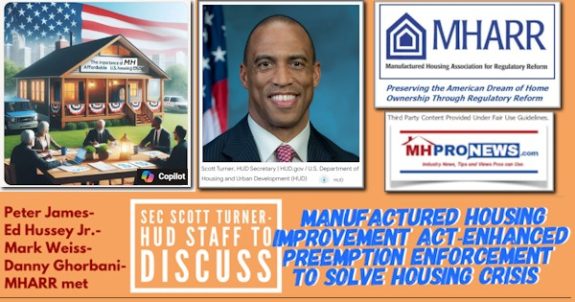CFPB Signs MOU on Supervisory Coordination
On June 4th, the Consumer Financial Protection Bureau (CFPB), jointly with the Federal Reserve Board (FRB), FDIC, National Credit Union Administration (NCU) and Office of the Comptroller of the Currency (OCC), announced a Memorandum of Understanding (MOU) on Supervisory Coordination.
The MOU requires the CFPB, before issuing a final exam report or taking supervisory action based on exam results, to “take into consideration concerns” raised by a depository institution’s prudential regulator in its comments on the CFPB’s draft exam report.
The supervised entities covered by the MOU are:
• depository institutions with more than $10 billion in total assets (large banks);
• affiliates of large banks that are depository institutions with $10 billion or less in total assets; and,
• other affiliates of large banks.
The MOU states that the agencies are considering entering into a separate agreement to address the CFPB’s authority to include its examiners on a sampling basis in a prudential regulator’s exam of a depository institution with less than $10 billion in total assets. The MOU does speak to the CFPB’s authority to examine nonbank subsidiaries of such entities. In addition, the MOU indicates that the CFPB and FRB plan to enter into a separate agreement to coordinate their supervisory activities related to holding companies and their subsidiaries.
Click here to view the MOU.
CFPB Finalizes Administrative Proceedings and Enforcement Rules
On June 6th, the CFPB finalized three rules that were issued in interim final form in July 2011:
• Rules Relating to Investigations: set forth the CFPB’s policies and procedures for conducting investigations. Click here to view.
• Rules of Practice for Adjudication Proceedings: set forth procedures for administrative enforcement actions initiated by the CFPB. Click here to view.
• State Official Notification Rule: sets forth procedures to be used by state officials to provide notice to the CFPB of any proceedings they initiate to enforce the Dodd-Frank Act or CFPB regulations. Click here to view.
The CFPB also issued a new interim final rule to implement the Equal Access to Justice Act that sets forth procedures for parties to adjudication proceedings before the CFPB to use to seek recovery of attorney fees and expenses. Click here to view.
MHI Responds to Request by House Committee on Oversight and Government Reform
On June 5th, MHI responded to a May 2012 letter from the Chairman of the House Oversight and Government Reform Committee, Darrell Issa, requesting additional information on existing and proposed regulations that continue to negatively impact job growth in the manufactured housing industry. The Committee has been undertaking an extensive examination of federal regulations that could potentially hinder job growth in the U.S. and MHI’s letter follows an initial request by Chairman Issa last year.
MHI’s comments focused on three major areas of regulatory reform: regulations authorized by the Dodd-Frank Wall Street Reform and Consumer Protection Act (P.L. 111-203; Dodd-Frank); the Manufactured Housing Construction and Safety Standards Act (42 U.S.C 5401 et seq.) administered by the U.S. Department of Housing and Urban Development (HUD Code); and proposed regulations authorized by the Energy Independence and Security Act of 2007 (EISA; P.L. 110-140).
Highlights of the MHI letter include the following:
• Minimize the burdensome Homeownership and Equity Protection Act (HOEPA) high-cost mortgage standards placed on manufactured housing.
• Reduce uncertainly in Qualified Mortgage guidelines.
• Eliminate conflicting federal mortgage origination standards.
• Establish realistic valuation methods for manufactured housing.
• Streamline HUD’s rulemaking process to ensure that the consensus process for the development, revision and interpretation of the standards and its enforcement regulations can function as envisioned by Congress.
• Promote innovation and affordability with timely construction codes and standards.
• Enhance preemption to streamline production and reduce regulatory impediments.
• Make manufactured housing a priority within HUD; appoint a Non-Career Administrator.
• Eliminate duplicative enforcement of manufactured housing energy efficiency standards.
Click here to view a copy of MHI’s letter to Chairman Issa.
MHI Comments on Department of Energy Request for Comments on Improving Regulation and Regulatory Review
On May 29, 2012, MHI provided comments to the Department of Energy’s (DOE’s) May 15, 2012 request for comments and information regarding regulations that should be modified, streamlined, expanded, or repealed as a part of its implementation of Executive Order 13563, “Improving Regulation and Regulatory Review,” issued by the President on January 18, 2011.
MHI’s comments focused exclusively on the draft proposed rule to establish new energy efficiency standards for manufactured housing which is currently pending at the Office of Management and Budget. In its comments, MHI made the following points:
• The draft proposed DOE Rule imposes overlapping and potentially contradictory regulation. Manufacturers will be subject to building and construction standards, enforcement and oversight by two federal agencies.
• The draft proposed DOE rule contains onerous and unrealistic testing requirements requiring every home to be tested in the factory. This will require the home to be preassembled at the factory, tested, and then disassembled for transportation to the home site.
• The proposed DOE draft rule will impact affordability. Because the vast majority of manufactured homebuyers are low and moderate income earners, even a small increase in home cost has a disproportionately large impact on manufactured homebuyers: on their ability to qualify for a home loan; on the proportion of income that goes toward mortgage payments; and, on their ability to purchase basic amenities.
• DOE’s own estimate of the total cost burden to the industry is $4.5 million over four years. While MHI believes the actual cost is likely to be far greater, a careful and thorough cost analysis is warranted and necessary to understand how manufactured homebuyers and the industry will be impacted by the proposed standards.
• The draft rule is in conflict with provisions of the Manufactured Housing Construction and Safety Standards (MHCSS) Act that require the Manufactured Housing Consensus Committee to review and recommend proposed changes to the Manufactured Housing Construction and Safety Standards.
• The mission of DOE and HUD are fundamentally different and conflicting. The Department of Energy’s mission is to ensure America’s security and prosperity by addressing its energy, environmental and nuclear challenges through transformative science and technology solutions. HUD’s mission is to create strong, sustainable, inclusive communities and quality affordable homes for all. MHI believes that new standards need to strike a balance: minimize energy use and costs for the next generation of manufactured homes while preserving affordability.
Click here to view MHI’s comments to DOE.
4,650 New HUD Code Homes Shipped in April 2012
In the month of April 2012, 4,650 new manufactured homes were shipped, up 17.6 percent from April 2011. Increases were across the board with shipments of both single-section and multisection homes up compared with the same month last year. As with the first three months of 2012, single section homes accounted for the largest portion of the increase, with shipments up 23.4 percent compared with the April 2011 figure.
Compared with the prior year, 2012 has recorded shipment increases every month so far. For the first four months of this year, shipments totaled 17,430 homes compared with 13,650 homes in 2011, a net increase of 27.7 percent.
The seasonally adjusted annual rate (SAAR) of shipments was 52,642 in April 2012, down 8.1 percent from the rate of 57,268 in March 2012. The SAAR corrects for normal seasonal variations in shipments and projects annual shipments based on the current monthly total.
A total of 7,124 floors were shipped in the month, an increase of 16.1 percent over April 2011. The number of plants reporting production in April was 123, one up from the number in March, and the number of corporations was 45, one down from the number in the prior month.


























